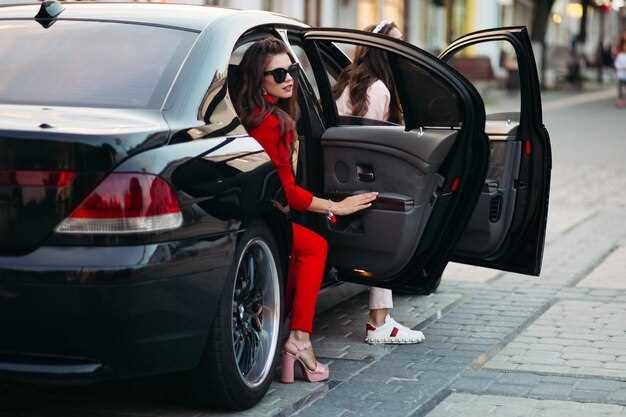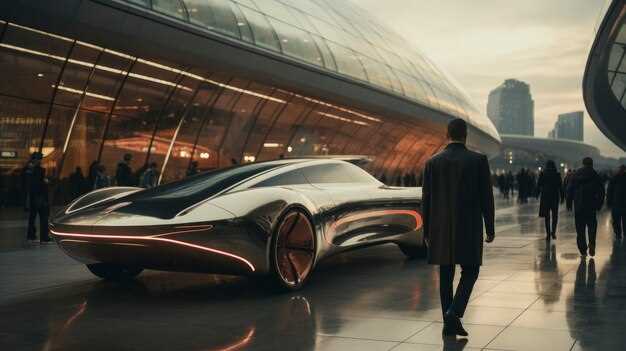
In the ever-evolving world of luxury, the intersection of automotive excellence and fashion innovation is a striking phenomenon. Luxury cars are no longer just mechanical marvels; they have become pivotal players in the realm of design and style. As brands meticulously craft their vehicles with precision and artistry, these masterpieces begin to influence the aesthetics and trends of the fashion industry.
The allure of luxury automobiles lies in their ability to marry function with beauty. Renowned manufacturers like Ferrari, Lamborghini, and Rolls-Royce not only showcase breathtaking engineering but also set standards for color palettes, materials, and forms that resonate within fashion circles. Designers frequently draw inspiration from these vehicles, incorporating their distinctive lines and luxurious materials into apparel and accessories, thereby creating a harmonious blend of high fashion and high performance.
Furthermore, the cultural impact of luxury cars extends beyond their physical attributes. They symbolize status, sophistication, and exclusivity–qualities that are highly sought after in the fashion industry. This synergy prompts collaborations where automotive design becomes a canvas for designers, resulting in limited-edition clothing lines, exclusive events, and even runway shows that celebrate both craftsmanship and creativity.
How Luxury Automotive Aesthetics Influence High Fashion Collections

The intersection of luxury automotive design and high fashion showcases a fascinating synergy that elevates both industries. Automotive aesthetics, characterized by sleek lines, innovative materials, and attention to detail, resonate deeply within the realm of fashion, inspiring designers to experiment with form and function in their collections.
Car manufacturers often use cutting-edge materials like carbon fiber, leather, and advanced composites, which have found their way into high fashion. Designers are increasingly adopting these materials to create garments that marry elegance with technical sophistication. The use of metallic finishes, reminiscent of car exteriors, adds a contemporary edge to runway pieces, pushing the boundaries of traditional fabric use.
Color palettes inspired by luxury vehicles, such as rich deep blues, vibrant reds, and understated greys, are regularly reflected in high fashion collections. These colors evoke a sense of sophistication and power, qualities that are synonymous with luxury automobiles. Furthermore, iconic automotive designs, like the curves of a classic sports car or the futuristic shapes of electric vehicles, are mirrored in the silhouettes of high fashion garments, bringing an automotive flair to clothing design.
The fusion of branding elements is another way automotive aesthetics influence fashion. Collaborations between car brands and fashion houses often yield limited-edition pieces that blend logos, typography, and design philosophies, creating an exclusive appeal. These partnerships help to align luxury car brands with a lifestyle of elegance and sophistication that designers strive to portray in their collections.
In addition to the aesthetic influence, the lifestyle associated with luxury automobiles plays a role in shaping fashion trends. The aspirational lifestyle surrounding high-end cars drives consumers towards fashion that complements this identity. As a result, collections often reflect a dynamic interplay between the thrill of the open road and the world of high fashion, producing styles that are daring yet refined.
Ultimately, the impact of luxury automotive aesthetics on high fashion collections exemplifies a continued dialogue between two distinct yet intertwined industries. By integrating elements of automotive design, fashion designers create innovative works that resonate with consumers who appreciate the artistry found in both realms.
The Role of Luxury Cars in Modern Interior Design Concepts

Luxury cars have transcended their primary function of transportation to become influential elements in modern interior design. Designers draw inspiration from the elegance and craftsmanship of high-end automobiles, integrating these elements into residential and commercial spaces. This synergy reflects a shared ethos of sophistication, quality, and innovation.
One of the key aspects of luxury cars is their meticulous attention to detail. From high-quality materials like leather and wood to advanced technology, these features serve as inspiration for interior designers seeking to create opulent environments. Elements such as sleek lines, ergonomic shapes, and minimalist aesthetics found in luxury cars can be mirrored in furniture design, lighting fixtures, and room layouts, resulting in spaces that exude refinement and modernity.
Moreover, the color palettes and finishes used in luxury automobiles often play a pivotal role in setting contemporary design trends. Rich tones and unique textures, often seen in car interiors, can be effectively incorporated into wall colors, upholstery, and decorative accents. The automotive world’s emphasis on bespoke options also encourages interior designers to explore customizable features and personalized elements, allowing clients to express their individual style within their spaces.
Additionally, luxury cars often include technological advancements that enhance user experience. This trend is paralleled in interior design, where the integration of smart home technology creates comfortable and efficient living environments. Features such as automated lighting, climate control, and high-end sound systems echo the advanced functionalities found in luxury vehicles, thereby transforming how spaces are experienced and utilized.
In conclusion, the influence of luxury cars on modern interior design is profound and multifaceted. By adopting the principles of elegance, quality materials, innovative technology, and personalized features inherent in luxury automobiles, designers are able to create captivating interiors that resonate with sophistication and modern style.
Collaborations Between Fashion Brands and Automotive Manufacturers: A Case Study
The intersection of fashion and automotive industries has given rise to a unique synergy, demonstrated through collaborations between renowned fashion brands and automotive manufacturers. One notable case study is the partnership between the luxury fashion house Gucci and the Italian automotive brand Fiat. This collaboration resulted in a limited-edition Fiat 500 featuring Gucci’s iconic patterns and design elements, showcasing how fashion can seamlessly enhance the aesthetic of an automobile.
Another significant example is the collaboration between BMW and the luxury fashion label, Karl Lagerfeld. This partnership led to the creation of a custom BMW i3, which was adorned with Lagerfeld’s signature monochrome aesthetic. The car’s interior featured luxurious materials and bespoke detailing that reflected Lagerfeld’s design philosophy, thereby merging functionality with high fashion.
These collaborations often serve to elevate brand visibility and prestige. By aligning themselves with luxury automotive manufacturers, fashion brands are able to position themselves within a lifestyle narrative that resonates with affluent consumers. The allure of luxury vehicles, paired with high-fashion designs, speaks to a demographic that values exclusivity and craftsmanship.
Furthermore, such partnerships extend beyond mere aesthetics; they often encompass shared marketing initiatives. For instance, the collaboration between Mercedes-Benz and fashion designer David Koma incorporated joint advertising campaigns, where both brands showcased their products in visual storytelling formats, enhancing audience engagement and broadening their reach.
In conclusion, the collaborations between fashion brands and automotive manufacturers not only elevate the products on offer but also create a distinctive cultural statement. By combining the worlds of fashion and automotive design, these partnerships push the boundaries of creativity, influencing trends and shaping the future of both industries.

